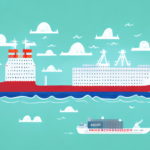Achieving Carbon Neutral Shipping: Strategies for Businesses
Shipping and logistics are essential components of the global economy, facilitating international trade and connecting markets worldwide. However, this industry is also a significant contributor to carbon emissions, with shipping alone accounting for more CO2 emissions than some entire countries. In response to escalating environmental concerns, many businesses are prioritizing carbon neutral shipping as a cornerstone of their sustainability strategies. This article delves into the importance of achieving carbon neutrality in shipping and logistics, exploring effective strategies and best practices for businesses to adopt.
Understanding the Importance of Carbon Neutral Shipping
The environmental impact of shipping is considerable. According to the International Maritime Organization (IMO), shipping accounts for approximately 2.5% of global greenhouse gas emissions. While this percentage may seem relatively small, projections indicate that shipping emissions could surge by up to 250% by 2050 if current trends continue (International Energy Agency). Beyond CO2 emissions, the shipping industry also contributes to air and water pollution, marine ecosystem degradation, and biodiversity loss.
Achieving carbon neutrality in shipping involves offsetting the carbon emissions generated through various means, such as purchasing carbon credits or investing in renewable energy projects and reforestation efforts (U.S. EPA). By adopting carbon neutral practices, companies can significantly reduce their environmental footprint and align with global sustainability initiatives, contributing to the broader fight against climate change.
The Environmental Impact of Shipping and Logistics
The environmental footprint of shipping and logistics extends beyond greenhouse gas emissions. These industries release pollutants like sulfur oxides (SOx), nitrogen oxides (NOx), and particulate matter (PM), which degrade air quality, particularly in coastal regions and port cities. Additionally, shipping activities lead to noise pollution, habitat destruction, and the introduction of invasive species, adversely affecting marine biodiversity.
In the realm of logistics, the packaging and disposal of products contribute to significant waste generation and pollution, exacerbated by the rapid growth of e-commerce. Addressing these issues requires a multifaceted approach that includes adopting alternative fuels, enhancing operational efficiency, and implementing sustainable packaging solutions.
Carbon Offsetting: What It Is and How It Works
Carbon offsetting is a pivotal strategy for achieving carbon neutrality in shipping and logistics. It involves compensating for emitted greenhouse gases by investing in projects that reduce or eliminate carbon emissions elsewhere. Common carbon offset projects include reforestation, renewable energy development, and energy efficiency improvements (Carbon Offset Guide). Additionally, emissions trading systems, such as cap-and-trade programs, allow companies to buy and sell emission allowances, providing financial incentives to reduce overall emissions.
By integrating carbon offsetting into their sustainability frameworks, businesses can effectively neutralize their carbon footprint, supporting global efforts to mitigate climate change while enhancing their corporate responsibility credentials.
Reducing Emissions through Alternative Fuel Sources
Transitioning to alternative fuel sources is a fundamental strategy for reducing emissions in the shipping and logistics sectors. Traditional shipping fuels like heavy fuel oil are carbon-intensive and contribute significantly to greenhouse gas emissions. In contrast, alternative fuels such as biofuels, liquefied natural gas (LNG), and hydrogen fuel cells offer lower carbon intensities and can substantially reduce emissions.
Biofuels are derived from renewable resources like vegetable oils, animal fats, and algae. They are considered sustainable alternatives to fossil fuels due to their lower greenhouse gas emissions during combustion. Importantly, biofuels can be used in existing engines with minimal modifications, facilitating their adoption within the shipping industry (ScienceDirect).
Liquefied Natural Gas (LNG) is gaining traction as a cleaner-burning fuel compared to traditional shipping fuels. LNG emits significantly fewer pollutants and has a lower carbon footprint. Its abundance and cost-effectiveness further enhance its appeal as a viable alternative for reducing the carbon footprint of shipping operations (International Energy Agency).
Hydrogen Fuel Cells represent a promising long-term solution for zero-emission shipping. Hydrogen fuel cells generate electricity through chemical reactions, producing only water as a byproduct. Although currently more expensive and requiring significant infrastructure investment, advancements in technology are making hydrogen a more feasible option for the shipping industry (U.S. Department of Energy).
Implementing Sustainable Packaging Solutions to Reduce Waste
Effective waste management and sustainable packaging are critical components in the journey toward carbon neutrality in shipping and logistics. Adopting recyclable or biodegradable materials, minimizing packaging size and weight, and establishing closed-loop supply chains can significantly reduce waste generation and environmental impact.
Innovations in sustainable packaging, such as the use of reusable containers and biodegradable materials, are gaining momentum, particularly among e-commerce companies. These solutions not only lessen the environmental burden but also offer economic benefits by reducing material costs and improving supply chain efficiency.
Moreover, consumer demand for eco-friendly packaging is on the rise. Businesses that prioritize sustainable packaging can enhance their market competitiveness and appeal to environmentally conscious consumers, fostering brand loyalty and long-term success.
Streamlining Transportation Planning to Optimize Efficiency
Optimizing transportation planning is essential for reducing emissions in shipping and logistics. Strategies such as optimizing delivery routes, minimizing empty miles, and utilizing real-time tracking technologies can enhance operational efficiency and lower carbon footprints.
Integrating alternative transportation modes, like rail or waterways, for long-distance shipping can result in significant emission reductions compared to traditional trucking methods. Additionally, the adoption of real-time tracking systems improves supply chain visibility and coordination, enabling more efficient logistics management and reduced fuel consumption (Supply Chain Digital).
Addressing the social and economic impacts of transportation planning is equally important. Implementing strategies that reduce noise pollution and traffic congestion in residential areas, along with ensuring fair labor practices, contribute to more sustainable and equitable supply chains.
The Benefits of Electric Vehicles in Shipping and Logistics
Electric Vehicles (EVs) are increasingly being adopted in the shipping and logistics sectors as a sustainable, low-emission alternative to traditional combustion engine vehicles. EVs offer numerous benefits, including significant reductions in greenhouse gas emissions and decreased reliance on fossil fuels.
In addition to environmental advantages, EVs provide economic benefits through lower fuel and maintenance costs. Companies like Amazon and UPS are at the forefront of this transition, with Amazon planning to deploy 100,000 electric delivery vans by 2030 and UPS having already integrated over 10,000 EVs into their fleet (Business Insider; UPS).
However, widespread adoption of EVs in shipping and logistics faces challenges such as high initial costs and the need for extensive charging infrastructure. Continued investment and innovation are necessary to overcome these barriers and fully realize the potential of EVs in creating a sustainable future for the industry (U.S. Department of Energy).
Best Practices for Measuring and Reporting Carbon Footprints
Accurate measurement and transparent reporting of carbon footprints are vital for businesses aiming to reduce their environmental impact. Adopting standardized methodologies, such as the Greenhouse Gas Protocol, ensures consistency and comparability in emissions reporting.
- Set Ambitious Reduction Targets: Establish clear, achievable goals for emissions reduction to guide sustainability efforts.
- Third-Party Verification: Engage independent auditors to verify emissions data, enhancing credibility and stakeholder trust.
- Lifecycle Assessment: Evaluate emissions across the entire lifecycle of products or services, from production to disposal, to identify comprehensive reduction opportunities.
- Transparency and Disclosure: Regularly disclose emissions data and sustainability initiatives to stakeholders, fostering accountability and transparency.
Incorporating these best practices enables businesses to effectively manage their carbon footprints, identify areas for improvement, and demonstrate a commitment to sustainability.
Collaborating with Supply Chain Partners to Achieve Carbon Neutrality
Achieving carbon neutrality in shipping and logistics requires collaboration across the entire supply chain. Businesses must engage with suppliers, customers, and other stakeholders to identify emission reduction opportunities and share best practices.
Collaborative initiatives, such as the Sustainable Shipping Initiative and the Clean Cargo Working Group, play a crucial role in driving industry-wide sustainability efforts. These platforms facilitate knowledge sharing, foster innovation, and promote the adoption of sustainable practices among members.
By working together, supply chain partners can leverage collective resources and expertise to implement more effective and comprehensive carbon neutral strategies, accelerating progress toward industry-wide sustainability goals.
Case Studies: Companies Leading the Way in Carbon Neutral Shipping
Numerous companies are pioneering carbon neutral shipping, showcasing the viability and benefits of sustainable practices:
- Maersk: Committed to achieving carbon neutrality by 2050, Maersk is investing heavily in alternative fuels, such as ammonia and biofuels, and exploring carbon capture technologies to reduce its emissions footprint.
- UPS: UPS aims to reduce its carbon footprint by 50% by 2030. The company is implementing a range of sustainable measures, including expanding its electric vehicle fleet, optimizing delivery routes, and utilizing alternative fuels.
- DP World: DP World is focused on reducing emissions through energy-efficient port operations, investing in renewable energy projects, and promoting the use of low-emission vehicles in its logistics network.
These case studies highlight the effectiveness of comprehensive sustainability strategies and serve as benchmarks for other companies striving to achieve carbon neutrality in shipping and logistics.
The Future of Sustainable Shipping: Innovations and Opportunities
The future of sustainable shipping is marked by a wave of innovations and opportunities aimed at reducing environmental impact and enhancing operational efficiency:
- Autonomous Ships: The development of autonomous and remotely operated vessels promises to optimize routing and fuel consumption, reducing emissions and improving safety.
- Advanced Materials: Innovations in materials science are leading to the creation of lighter, more durable shipbuilding materials, which contribute to fuel efficiency and lower emissions.
- Circular Economy Approaches: Embracing circular economy principles, such as recycling and reusing materials, minimizes waste and supports sustainable resource management.
Additionally, the transition to carbon neutral shipping presents opportunities for green job creation and economic growth within sustainable industries. As the sector continues to evolve, the integration of these innovative solutions will be critical in achieving long-term sustainability goals.
Overcoming Barriers to Implementing Carbon Neutral Shipping Strategies
Despite the clear benefits, implementing carbon neutral shipping strategies faces several challenges:
- Cost Constraints: The initial investment required for alternative fuels, advanced technologies, and sustainable infrastructure can be significant.
- Technological Limitations: Emerging technologies, such as hydrogen fuel cells and autonomous ships, are still in the development or early adoption stages, requiring further advancements and scalability.
- Lack of Regulatory Incentives: Insufficient regulatory frameworks and incentives can hinder the widespread adoption of sustainable practices within the industry.
Addressing these barriers necessitates coordinated efforts between businesses, governments, and industry stakeholders. Policy support, financial incentives, and collaborative research initiatives are essential to foster a conducive environment for the adoption of carbon neutral shipping practices.
Cost-Effective Solutions for Achieving Carbon Neutrality in Shipping and Logistics
Achieving carbon neutrality doesn't have to be prohibitively expensive. Many sustainable practices offer long-term cost savings and can be implemented through strategic planning and collaboration:
- Energy Efficiency Improvements: Upgrading to energy-efficient engines, optimizing hull designs, and implementing fuel-saving technologies can reduce fuel consumption and fuel costs.
- Operational Optimization: Streamlining supply chain processes, optimizing routes, and reducing idle times enhance operational efficiency and lower emissions.
- Partnerships and Collaborations: Collaborating with suppliers and logistics partners can lead to shared investments in sustainable technologies and bulk purchasing discounts for eco-friendly materials.
By focusing on strategies that provide both environmental and economic benefits, businesses can effectively transition to carbon neutral shipping while maintaining profitability and competitiveness.
Adapting to Consumer Demands for Sustainable Shipping Practices
Consumer awareness and demand for sustainable products and services are driving changes in shipping and logistics practices. As more consumers prioritize environmental responsibility, businesses must adapt by implementing sustainable shipping solutions to meet these expectations.
Offering eco-friendly shipping options, such as carbon neutral delivery, recyclable packaging, and reduced packaging materials, can enhance customer satisfaction and loyalty. Additionally, transparent communication about sustainability initiatives fosters trust and strengthens brand reputation.
By aligning shipping practices with consumer values, businesses not only contribute to environmental sustainability but also gain a competitive edge in the marketplace, attracting a growing segment of environmentally conscious consumers.
Conclusion
Achieving carbon neutrality in shipping and logistics is a critical endeavor for businesses committed to sustainability and environmental stewardship. By understanding the environmental impact, adopting alternative fuels, implementing sustainable packaging, optimizing transportation planning, and collaborating with supply chain partners, companies can significantly reduce their carbon footprint.
Overcoming barriers through innovation, cost-effective solutions, and adapting to consumer demands will pave the way for a more sustainable future in the shipping industry. As demonstrated by leading companies like Maersk and UPS, the transition to carbon neutral shipping is not only feasible but also beneficial for both the environment and business performance.
Embracing these strategies will enable businesses to contribute meaningfully to the global effort to combat climate change, ensuring a resilient and sustainable maritime sector for generations to come.




















